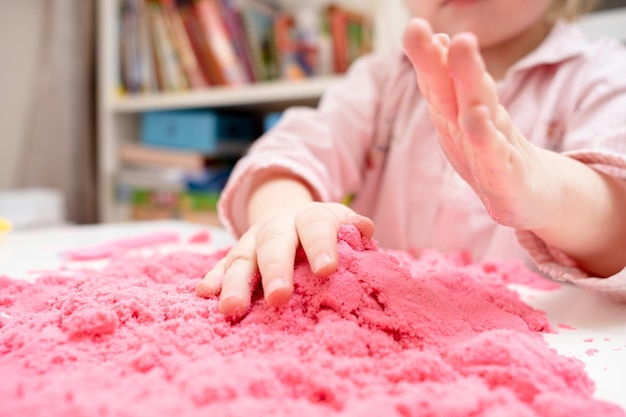Sensory Play in Early Childhood Education
 Learning happens most effectively with hands-on and open-ended materials that can be used in multiple ways. When children involve their hands in the learning process their brains are more involved, they are more focused and motivated. Through manipulating different materials they are able to experiment with trial and error, and problem-solving.
Learning happens most effectively with hands-on and open-ended materials that can be used in multiple ways. When children involve their hands in the learning process their brains are more involved, they are more focused and motivated. Through manipulating different materials they are able to experiment with trial and error, and problem-solving.
Sensory play is hands-on and self-directed play that offers sensory stimulation for the brain. The use of all the senses allows children to learn more from the experience and retain more information. Asking children questions during sensory play helps to expand their vocabulary. Questions like "What does it feel like?" and "What does it smell like?" encourage children to use and expand their vocabulary.
Kinetic sand is mouldable, sculptable sand, children can use for creative, sensory, and open-ended play.
Benefits to children using Kinetic Sand:
- Develop fine motor skills.
- Children can squeeze, squish, smash, poke, or pinch to strengthen their hands. Scoop it or cut it to practice grasping and using tools such as spoons, ice cream scoopers, and cookie cutters.
- Sensory play
- Kinetic Sand is the perfect sensory material for kids who either crave or are sensitive to tactile input. Because Kinetic Sand can be squeezed it provides deep pressure, which is a form of tactile input that is calming and organizing to the body. Kids who are sensitive to messy play will likely be open to engaging with Kinetic Sand due to its soft, non-sticky texture.
Create your own Kinetic Sand.
Recipe:
- 2 ½ cups play sand
- 1 ½ cups corn starch
- ½ cups olive oil
- 45 Hour Preschool Methods and Materials
- CDA Bridge Bundle: Infant/Toddler without Portfolio Review
- CDA Home Visitor Credential Birth to 5
- Early Childhood Education
- CDA Bridge Bundle: Preschool without Portfolio Review
- CDA Bridge Bundle: Family Child Care without Portfolio Review
- CDA Infant/Toddler: Parent Relationships
- Understanding Why Toddlers Bite
- Child care education
- Dramatic Play and Sensory Play Activities
- The Water Table: Supporting Sensory Development
- The Power of Play: Unleashing Potential in Early Childhood Education
- The Importance of Outdoor Play in Early Childhood Education: Nurturing Growth and Learning in Nature
- Sensory Overload: How a Box of Rice Can Help Your Brain Chill Out
- How your child's sensory toys serve as portals to different imaginative worlds
- Pumpkin Spice and Sensory Delight: Easy Autumn Sensory Bins for Early Learners
- Snow Much Fun: Winter Sensory Activities to Enhance Child Development
- Playdough Dreams: Play Goals for Tiny Humans in 2025
- Infant-Toddler CDA Certification: Your Key to Specializing in Early Childhood Care
- Where to Find the Best Early Childhood Education Courses
- Smart & Simple Lesson Planning for Early Childhood Educators
- Balancing Screen Time with Hands-On Learning
- Introductory Childcare Courses With Certificates to Get You Started
- 🌟Little Hands, Big Learning: Why Play is the Secret Ingredient to Early Childhood Growth
- Early Childhood Education
- 🚩👶 What Are the Red Flags in Infant Development Every Educator Should Know?